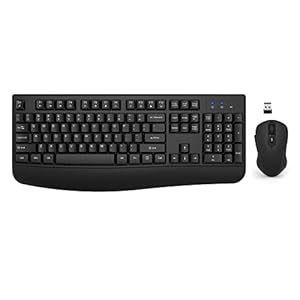After watching its fixed-lens X100 VI camera do stratospheric gross sales numbers, Fujifilm determined to construct an even bigger and badder model that would go up towards Leica’s full-frame Q3. The result’s the $4,899 GFX100RF, the first-ever 100-megapixel medium format compact digicam.
The GFX100RF has some novel options, like a crop dial that permits you to select facet ratios starting from vertical 3:4 to a panoramic 65:24. It could actually digitally zoom by way of a devoted toggle and gives all of the social media-friendly advantages of the X100 VI, together with movie simulations. You possibly can even shoot medium-format 4K video.
Nonetheless, the GFX100RF has some flaws. The place Leica’s Q3 has a quick 28mm f/1.7 lens and optical stabilization, Fujifilm’s 35mm lens (28mm equal) right here is proscribed to f4 and lacks any shake discount, hurting the digicam in low gentle. I’ve used the digicam for practically two weeks now and loved it, however given the excessive value and quirks, it’s positively not for everybody.
The GFX100RF is the world’s first 100MP medium format compact digicam. It gives unbelievable picture high quality and adaptability however isn’t nice in low gentle, and the excessive value makes it a distinct segment product.
- Extremely sharp pictures
- Progressive facet ratio dial
- Compact for a medium format digicam
- Good design and construct high quality
- Poor low-light efficiency
- No picture stabilization
- No hybrid viewfinder
- Middling autofocus
Design and dealing with
Although it’s Fujifilm’s smallest medium-format digicam, the GFX100RF remains to be a hefty unit at 735 grams. That’s greater than many full-frame mirrorless cameras and across the identical weight because the Q3. The management structure is just like the X100 VI with management dials on the back and front, together with publicity compensation, shutter velocity and ISO controls on high.
What’s new is the facet ratio dial that provides modes for 4:3, 3:2, 16:9, 17:6, 3:4, 1:1, 7:6, 5:4 and 65:24 (the latter pays tribute to Fujifilm’s TX-1 panoramic camera). The GFX100RF additionally has a toggle up entrance to pick 28mm, 35mm, 50mm and 63mm (full-frame equal) zoom ranges. These regularly lose decision because of cropping, from 100MP at 28mm all the way down to 20MP at 63mm. Bokeh can also be lowered because the sensor measurement shrinks.
The rear 2.1-million-dot, 3.15-inch show solely tilts up and down, however that’s superb for the digicam’s main road photograph position. Although sharp and detailed, the 5.76-million-dot digital viewfinder sadly lacks the X100 VI’s signature hybrid show that permits you to change between optical and digital views. Nonetheless, it does provide three modes to assist the facet ratio dial and make composition simpler. One solely exhibits the chosen crop, one other exhibits the complete scene with a field across the crop and the third shows every thing exterior the crop at 50 % opacity.
Battery life on the GFX100RF is excellent with as much as 820 photographs on a cost or about 100 minutes of 4K 30 fps video capturing. For me, that amounted to just about two days of use, which is best than practically each different (non-DSLR) digicam I’ve examined. The digicam additionally consists of twin UHS-II reminiscence card slots plus mic, headphone, microHDMI and USB-C ports. The latter permits not solely information transfers and charging, but in addition SSD video recording.
Efficiency
The GFX100RF is basically a GFX100S II squeezed right into a compact physique, so efficiency is analogous with as much as 6 fps burst capturing speeds. Nonetheless, every RAW file is as much as 150MB in measurement and JPEGs are 70MB, so even at these slower speeds, you possibly can fill your reminiscence playing cards very rapidly. That mentioned, this digicam positively isn’t designed for sports activities or wildlife, so I didn’t use burst capturing typically.
The autofocus is dependable when capturing single pictures, nevertheless it’s slightly laggy for bursts. Utilizing the face and eye detect AI modes helps nail eye focus reliably, nevertheless it’s not as quick as Sony and Canon’s methods. It additionally helps animal, hen and automobile monitoring, which helped me seize sharp pictures of geese floating on the Seine river in Paris.
The GFX100RF has each mechanical and silent digital shutter modes. Rolling shutter skew is an enormous problem with this sensor in silent mode with fast paced topics, although. Fortunately, the mechanical shutter eliminates that and is sort of inaudible.
The built-in ND filter can cut back gentle as much as 4 stops, letting you shoot on sunny days whereas retaining some bokeh. Nonetheless, the primary drawback is when there’s not sufficient gentle. The minimal f4 aperture is solely insufficient and the dearth of stabilization exacerbates the difficulty as you danger blurry pictures at sluggish shutter speeds. In dim gentle you could must pack a tripod, which isn’t supreme for a compact digicam.
Picture high quality
The facet ratio and zoom choices on the GFX100RF are helpful and enjoyable. Some curmudgeons might choose to shoot full sensor 100MP pictures after which simply crop later in submit manufacturing. However the GFX100RF lets you’ve gotten your cake and eat it, too. You possibly can apply all of the crops, zooms and movie simulations you need and save them as JPEGs for simple sharing. Then, if it’s essential return and alter one thing, you even have the complete 100MP RAW picture as a backup (although clearly, capturing each will fill your reminiscence card extra rapidly).
As with the GFX100S II, the GFX100RF is a high performer relating to element and sharpness. Colours are pleasing and RAW recordsdata retain excessive quantities of dynamic vary, permitting for simple adjustment in Lightroom. And naturally, Fujifilm’s movie simulations offer you colourful, nostalgic choices — like Reala Ace or the dramatic black and white look of Acros — straight out of the digicam.
The GFX100RF additionally delivers stunning bokeh, with the f4 aperture equal to round f3 for a full-frame digicam when it comes to depth of subject (however not gentle gathering). Like different GFX fashions, the big sensor produces extra dramatic pictures than full body for portraits, landscapes or road photographs.
Like I discussed, issues disintegrate when the sunshine dims, although. With no choice under f4 and no stabilization, I relied on excessive ISOs to spice up publicity. The GFX100RF isn’t unhealthy on this space, with controllable noise as much as about ISO 8000, however that’s not excessive sufficient contemplating the opposite elements. For these causes, the GFX100RF is much less versatile than it might be.
Video
The GFX100RF can deal with 4K and widescreen DCI 4K at as much as 30 fps with pretty excessive bit charges, so long as you’ve gotten a quick UHS-II SD card. It could actually even shoot ProRes with at a lot larger information speeds, however for these, you’ll must report on to an SSD by way of the USB Sort-C port.
Autofocus for video is first rate however not extremely quick, so ideally your topics don’t transfer an excessive amount of. The AI-powered face and eye detection helps nail focus when filming folks, however once more, can fail if topics dart round.
Video has a dreamy high quality and bokeh that solely a big sensor can provide. Just like the GFX100S II, the GFX100RF captures video utilizing the complete width of the sensor in most modes, albeit with pixel binning that reduces high quality. The sharpest video comes with a 1.32x crop, however that reduces the picture high quality advantages of a big sensor.
Video on the GFX100RF has one factor going for it that the photograph facet lacks: digital stabilization. This smooths out shakiness for handheld photographs, however the extreme rolling shutter limits your means to maneuver the digicam rapidly.
Colours are pleasing and simple to regulate, significantly when utilizing Fujifilim’s F-Log or F-Log2 10-bit modes to spice up dynamic vary. And naturally, Reala Ace, Acros and different movie simulations can be found in video modes to create nice seems to be straight out of the digicam.
Wrap-up
Fujifilm’s $4,899 GFX100RF is a robust digicam with unbelievable picture high quality that’s hampered by an absence of low-light efficiency. It’s additionally a distinct segment and costly product that, not like Fujifilm’s widespread X100 VI, solely appeals to a small group of photographers.
Its main rival on this house is Leica’s Q3, which has a smaller 60MP full-frame sensor and better $6,735 price ticket. Nonetheless, the Q3 has a a lot quicker 28mm f/1.7 lens, much less rolling shutter, a single SD UHS-II card slot and as much as 8K video. It additionally has the Leica model cachet, which does imply one thing to folks spending this type of cash.
The GFX100RF is enjoyable to make use of, although, and introduces a number of improvements just like the facet ratio dial. Although it could by no means have an enormous market, I believe merchandise like this push the trade in new instructions and create conversations that draw new folks into images. So though I’d by no means purchase one, I’m glad the GFX100RF exists for these causes.
Trending Merchandise

Wi-fi Keyboard and Mouse Combo, EDJO 2.4G Full-Sized Ergonomic Pc Keyboard with Wrist Relaxation and three Stage DPI Adjustable Wi-fi Mouse for Home windows, Mac OS Desktop/Laptop computer/PC

SAMSUNG 27″ Odyssey G32A FHD 1ms 165Hz Gaming Monitor with Eye Saver Mode, Free-Sync Premium, Height Adjustable Screen for Gamer Comfort, VESA Mount Capability (LS27AG320NNXZA)

ASUS VA24DQ 23.8â Monitor, 1080P Full HD, 75Hz, IPS, Adaptive-Sync/FreeSync, Eye Care, HDMI DisplayPort VGA, Frameless, VESA Wall Mountable ,BLACK

Logitech MK120 Wired Keyboard and Mouse Combo for Windows, Optical Wired Mouse, Full-Size, USB, Compatible with PC, Laptop – Black

ASUS 31.5” 4K HDR Eye Care Monitor (VP327Q) – UHD (3840 x 2160), 99% sRGB, HDR-10, Adaptive-Sync, Audio system, DisplayPort, HDMI, Flicker Free, Blue Gentle Filter, VESA Mountable,Black










